Despite showing glimpses of promise during the 2021/22 pre-season at Middlesbrough, Neil Warnock allowed Djed Spence to leave the club on a season-long loan to Nottingham Forest.
“He needed to sort himself out, really. I basically said to him that you can go to the top or you can go non-league.”
“I think Steve Cooper is the manager for him, to be honest. He has let him go forward more often, which suits his game”, explained Warnock.
Spence started his football career with South London side Junior Elite where he played alongside Arsenal’s Emile Smith Rowe. He then moved to Fulham’s academy, before joining Middlesbrough in the summer of 2018 at 17 years of age. The right-back quickly grabbed the eye and started showing his exciting talent and potential.
Spence was integrated into the first-team fold during the 2019/20 season by Jonathan Woodgate and became a regular under his successor Neil Warnock in the first half of the 2020/21 season. Spence’s minutes began to drop, and he was no longer fancied by the manager, leading to his eventual loan to Forest.
Since moving to the City Ground, Spence has relished his new role at right wingback under Steve Cooper. He demonstrated his quality and consistency throughout the league campaign, and ended the season playing the 5th most minutes and matches in the Championship, and the 1st among fullbacks. The 21-year-old was most notably praised for his impressive performances in the FA Cup victories over Leicester City and Arsenal.
After gaining promotion back to the Premier League, the Forest faithful will be hoping that the deal will be made permanent. Spence, now back at Boro, is heavily being linked with a move to Tottenham Hotspur. Antonio Conte is rumoured to rate the young Englishman and wants him to possibly replace the outgoing Emerson Royale at right wingback in his 3-4-3 system.
Middlesbrough, who already have a top-quality right back in Isaiah Jones, will happily cash in on Spence in the summer for around £15m.
This tactical analysis and scout report will look at Spence’s key attributes and style of play. The analysis highlights his strengths and weaknesses and whether he is ready to make the step up to the Premier League for a top-four club.
Style of play
The young Englishman is a very dynamic, energetic and forward-thinking right back/wingback. Spence is as direct as they come, constantly on the attack and looking to push his side up the field. The 3-4-1-2 system under Cooper give him the freedom to patrol up and down the flanks and act as his team’s primary attacking force from the right side of the pitch.
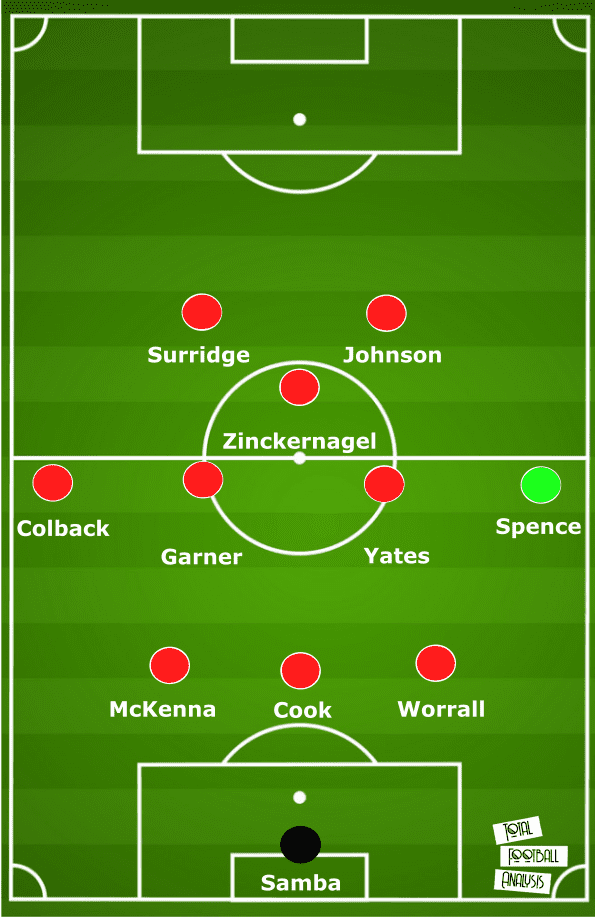
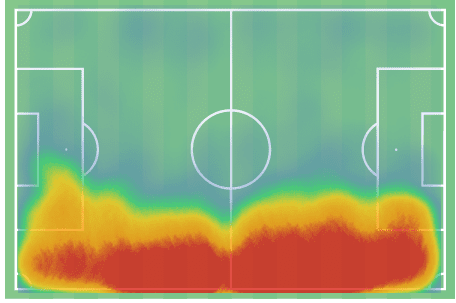
He has been undroppable this season, regarded as one of the standout players in the league. Spence played a vital role in Forest’s promotion-winning side. He was consequently nominated for the EFL Young Player of the Year award and was featured in the EFL Championship Team of the Season.
Below is Spence’s percentile rank vs fullbacks in the Championship for the 2021/22 season:
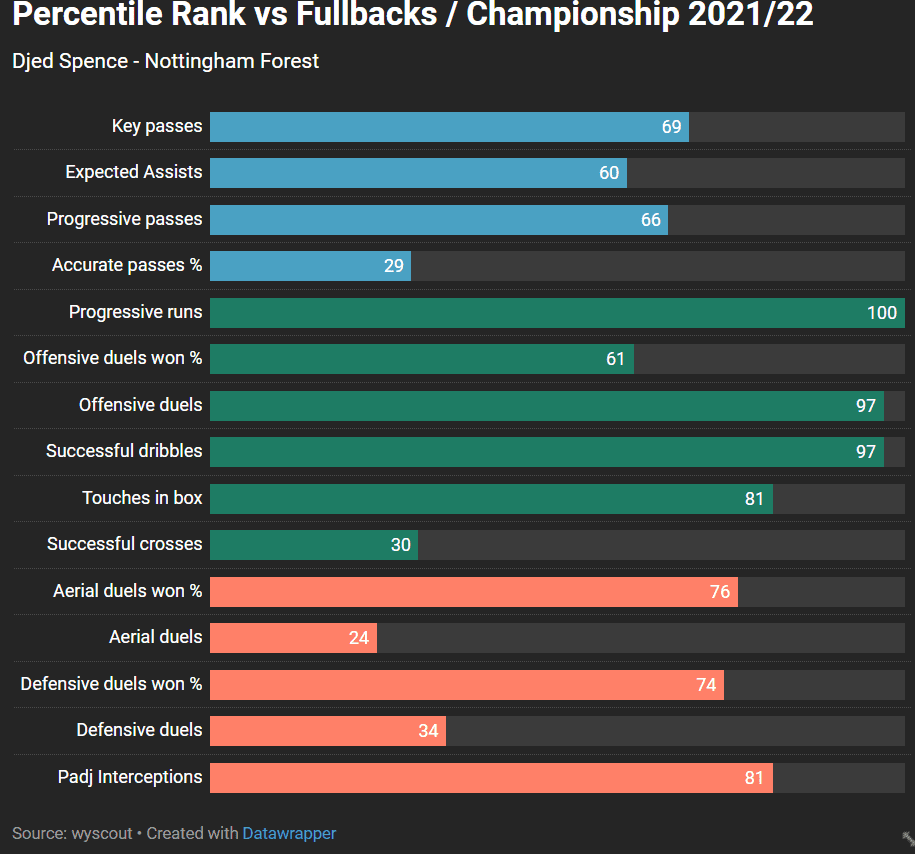
Essentially, his primary strengths are his ball carrying and dribbling, as well as his physicality and ability to shield the ball from defenders. Spence ranks in the 100th and 97th percentile in progressive runs and dribbling respectively. He completed more dribbles (76) than any other defender in the Championship last season. He also engages in a lot of offensive duels, 11.59 per game, ranking in the 97th percentile among fullbacks.
Attack-wise, Spence scored 2 goals and supplied 4 assists in 45 league games. He ranked 5th in expected assists and 10th in actual assists among all players. He created 44 chances, made 40 key passes and took 27 shots, a rather high amount for a fullback. In addition, he has a 77.7% passing accuracy and 34.2% crossing accuracy, mainly due to the high number of passes attempted into the final third, but it is an area of improvement moving forward.
Defensively, he sometimes demonstrates a passive approach, waiting for opponents to come his way rather than applying pressure early on. This is also down to the team’s tactics of playing in a mid-block without an emphasis on pressing. Spence does not engage in many aerial and defensive duels, 2.2 and 5.98 per game respectively. He was able to make 5.14 interceptions per game, 69 in total, due to his pace, energy and physical presence.
Attacking
As mentioned, Spence is a forward-minded wingback who likes to be involved in the play high up the pitch and link up with his midfielders and forwards. He is the team’s primary source of attack from the right-hand side, as highlighted by Forest’s positional attacks from the May fixtures against Huddersfield Town and Sheffield United. 65% and 51% of the attacks came from Spence’s side.
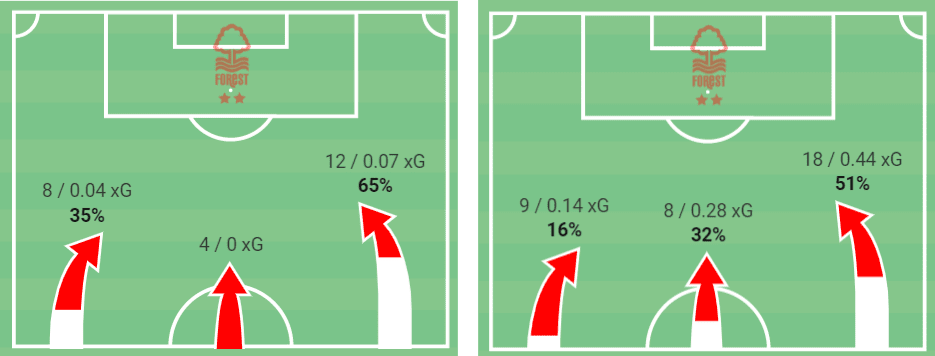
In general, Spence is very good at receiving and controlling the ball, then driving at his opponents. He likes to isolate the opposition full-back, beat his man and ping crosses into the box. Spence does not make many runs in behind but prefers to receive the ball to his feet and assess options ahead of him. To stress that, Spence has been flagged offside only once this season.
He often takes up a laid-back position and sprays through balls to his attackers, more like a quarterback position. Here, we can see the connection, as Spence is telling the forward as to where to make the run.
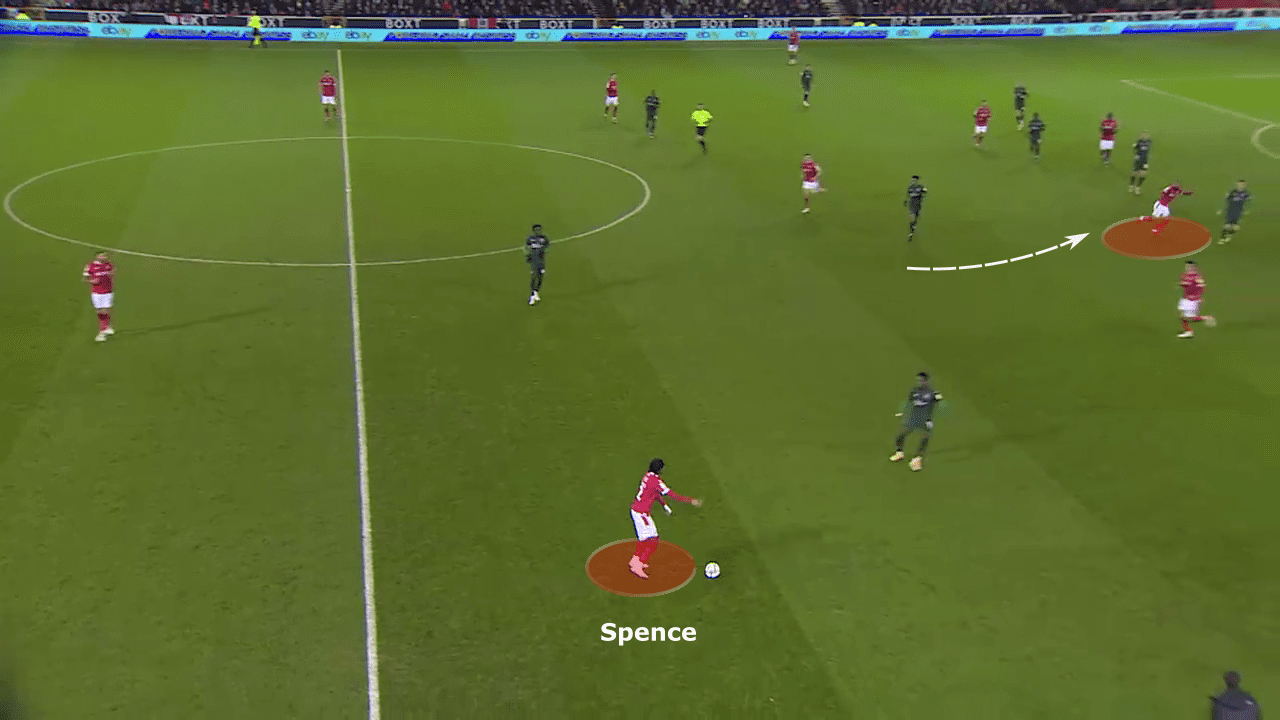
He then whips in a ball around the defence for his teammate to collect in a crossing position.
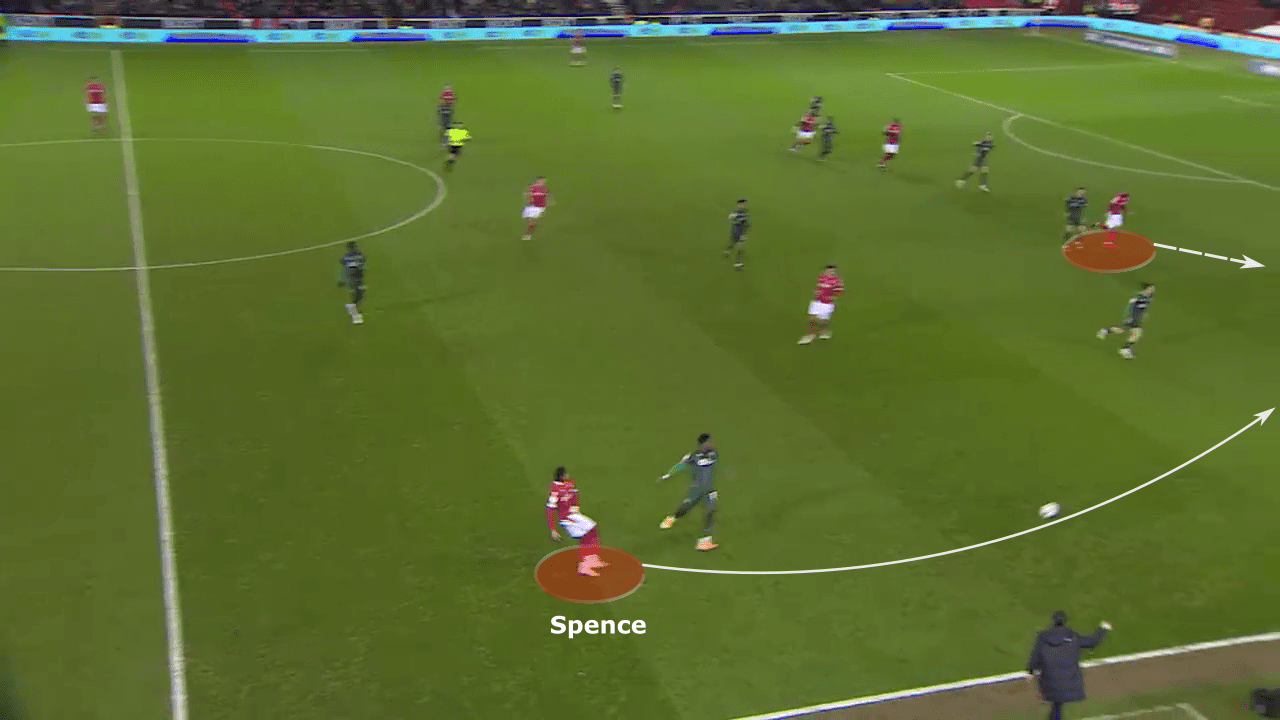
When Spence receives the ball near halfway with space ahead, the first thought that enters his mind is “run”. His sheer pace is difficult to stop, attracting opposition players towards him and freeing up his teammates. In this instance, he bursts forward in the wide channel and slides in a delightful through ball to take out the entire back four.
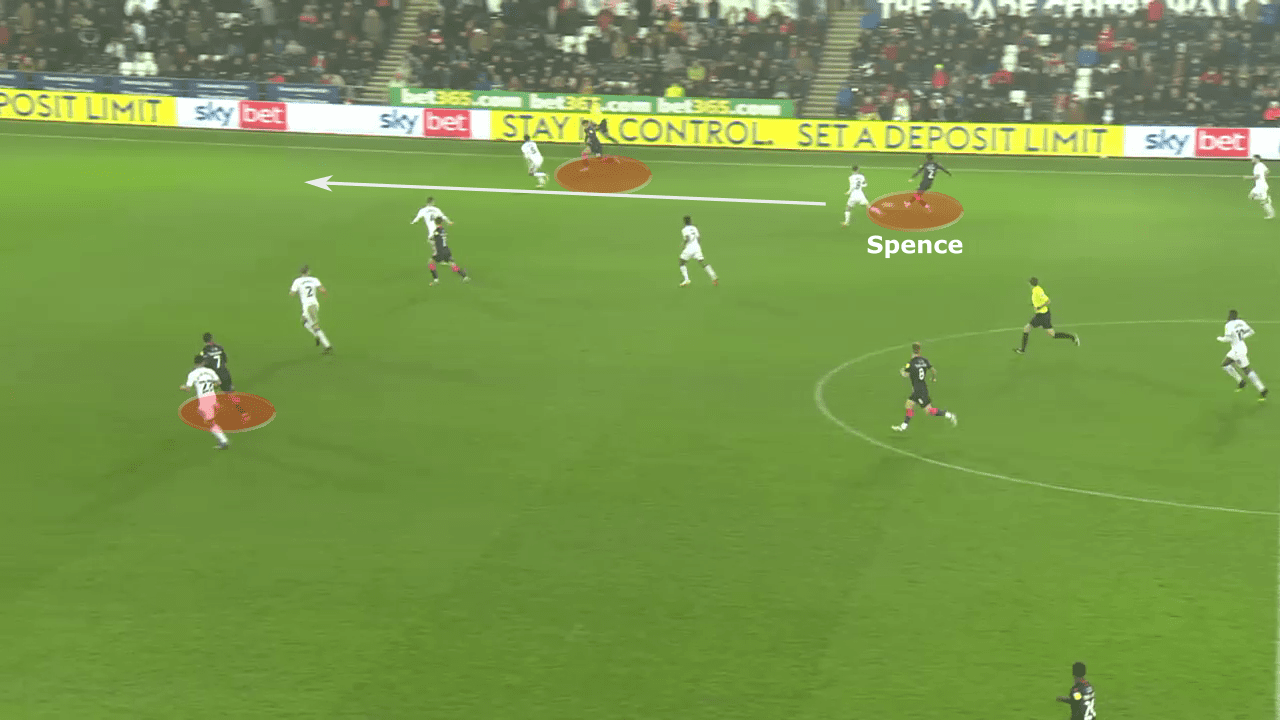
The action leads to a low cross into the box and a Lewis Grabban tap-in goal. Spence provides the pre-assist and pivotal pass.
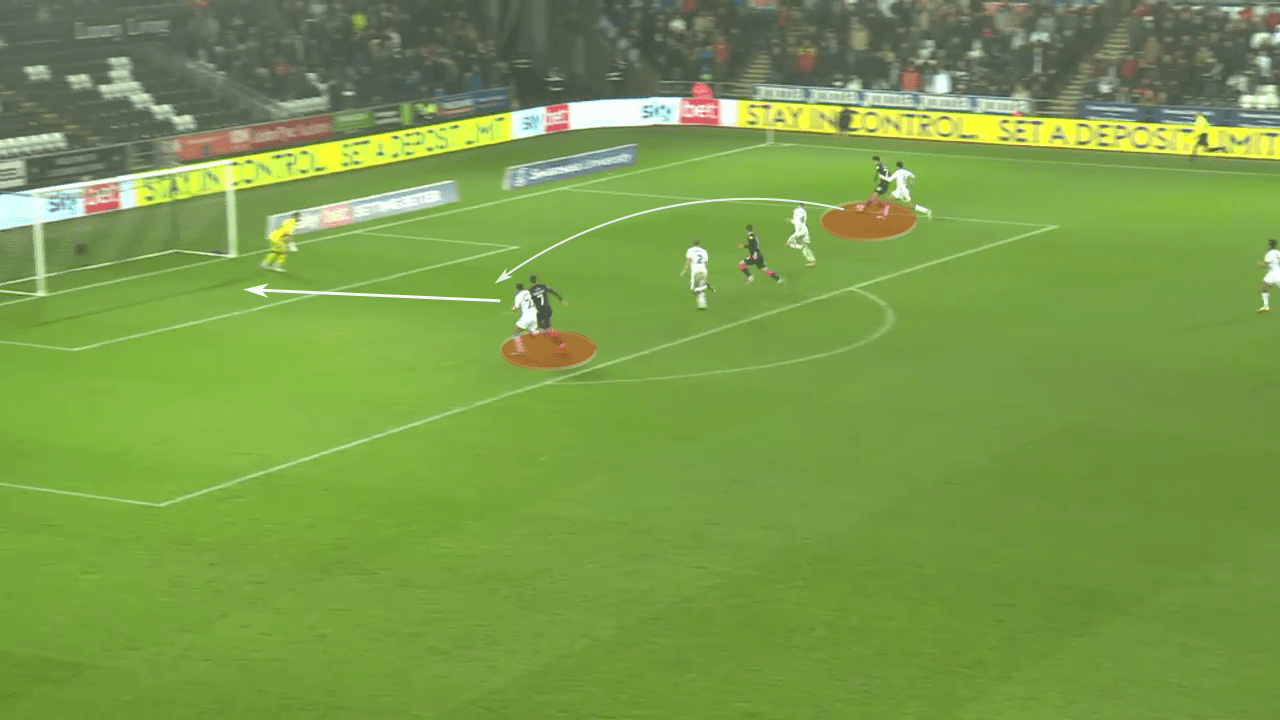
Spence is also crucial to his side’s counter-attacking play – whether it’s him driving with the ball in transitions or sprinting forward to provide support for the ball carrier. His speed enables him to cover a lot of space in a short span of time.
This was demonstrated in the league game vs Bournemouth. Forest win the ball back in their own half and Spence is on his bike.
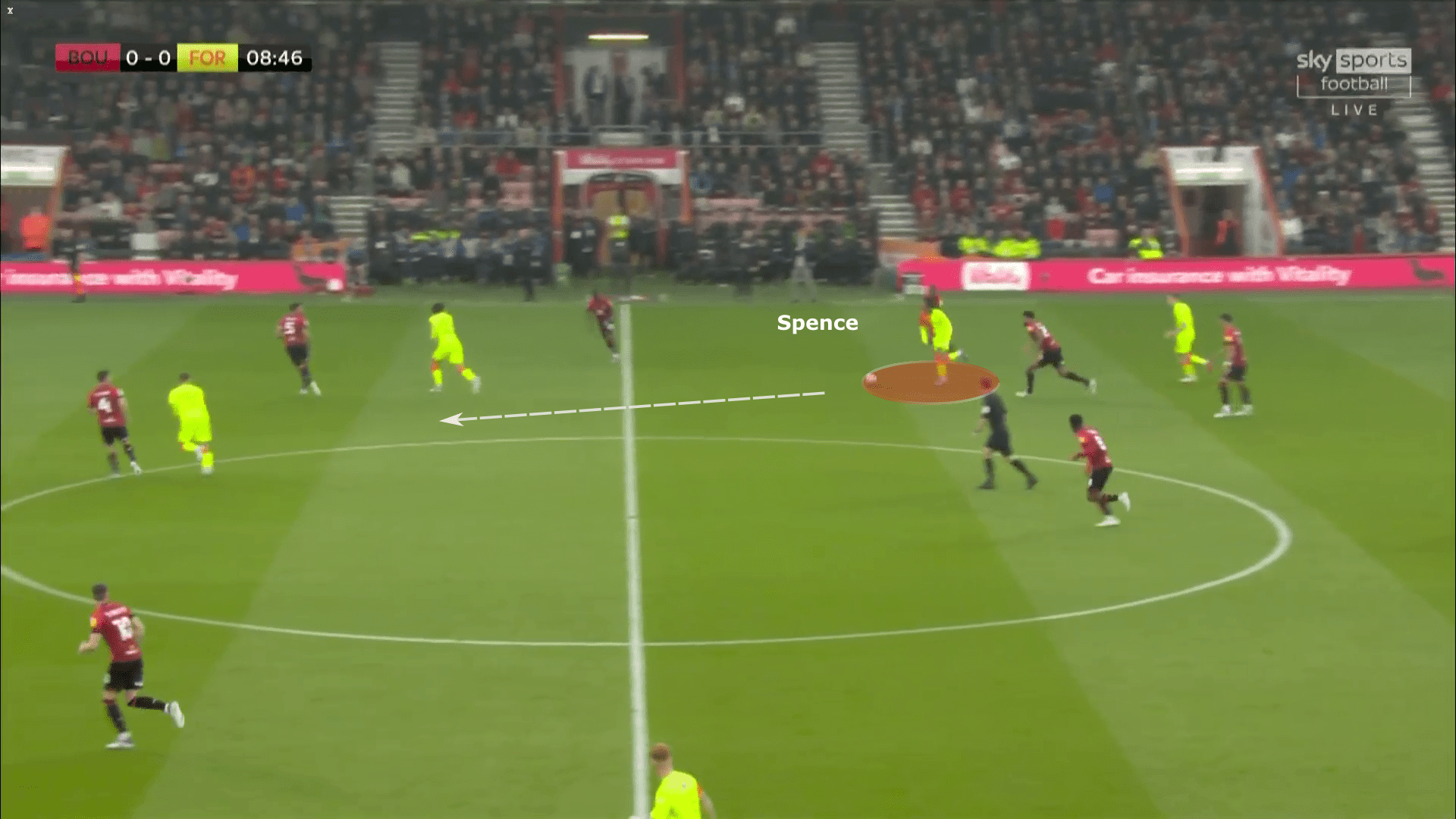
He makes a blistering run towards the inside channel, no player can catch him. As he reaches the mid-third of the pitch, all the defenders are ball-watching, focusing on Spence alone. He spots Sam Surridge and plays him through in between the centre-backs to set him up 1v1 with the keeper.
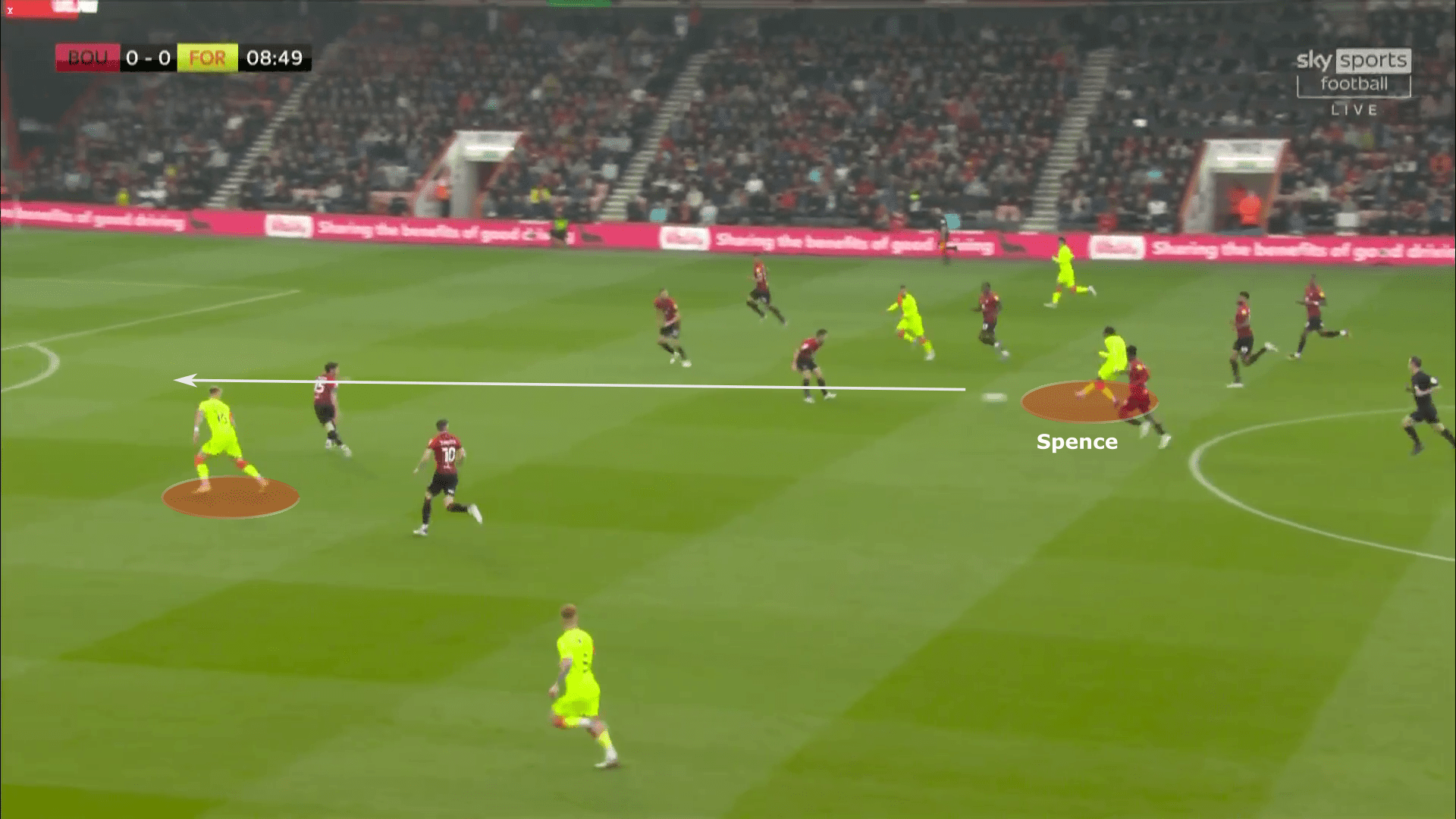
Spence also fancies the occasional shot from distance, scoring a screamer against QPR.
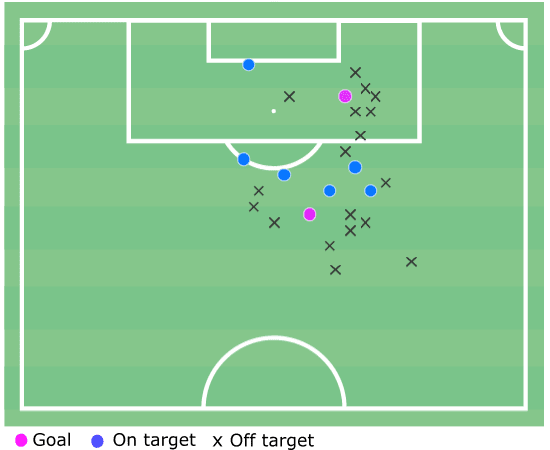
Defending
Spence is pretty solid defensively, but that area of his game can and will be improved with time as he develops. As mentioned, Forest play in a mid-block with no huge emphasis on pressing, so his starting position is not very advanced. He is particularly good at defending the left channel between him and the right centre-back.
His relentless energy and pace allow him to fool opponents into thinking they have time and space to move or pass the ball into. But out of nowhere he pops up and intercepts the ball or cuts the pass being played. This is perfectly showcased during the game against Huddersfield.
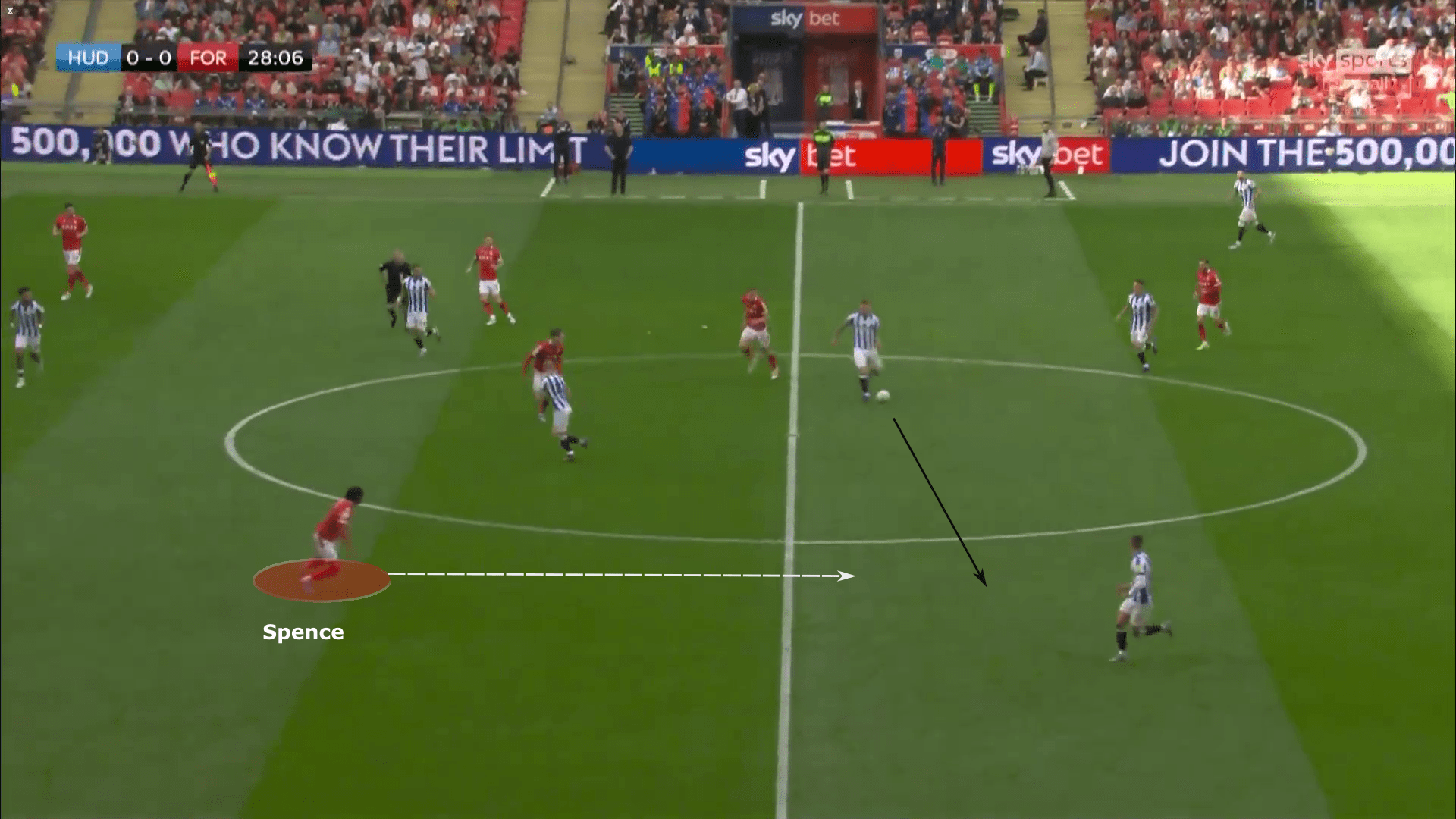
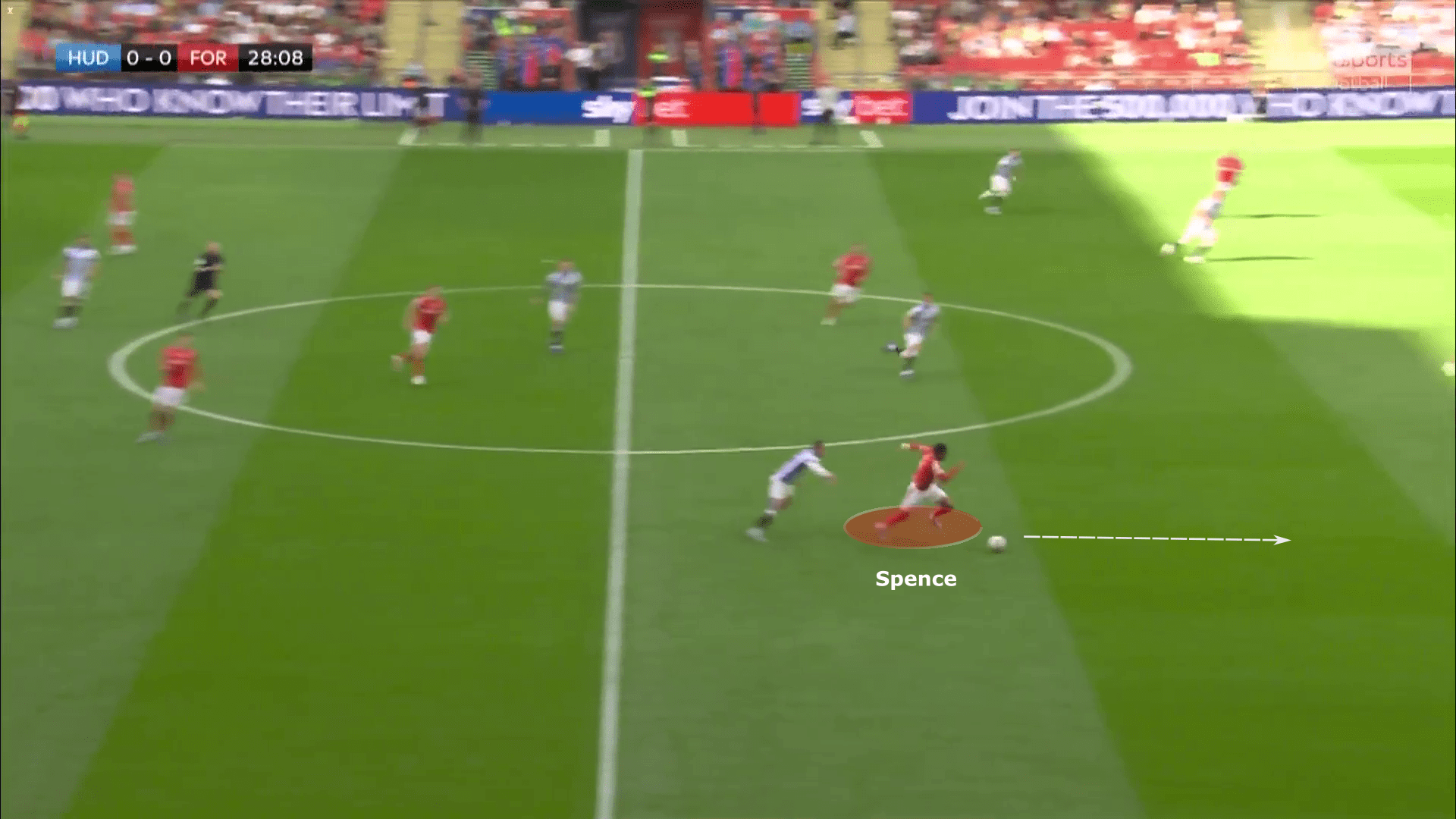
The back three provide the necessary shield and protection at the back which helps the wingbacks push on and join the attacks. When Forest lose the ball high up the pitch though, Spence’s recovery interventions are vital to stop counter-attacks.
Here, Forest concede possession after a corner and the opponent beats Spence to the loose ball. He plays a pass into the middle and continues his run to receive the lay-off, beating Spence.
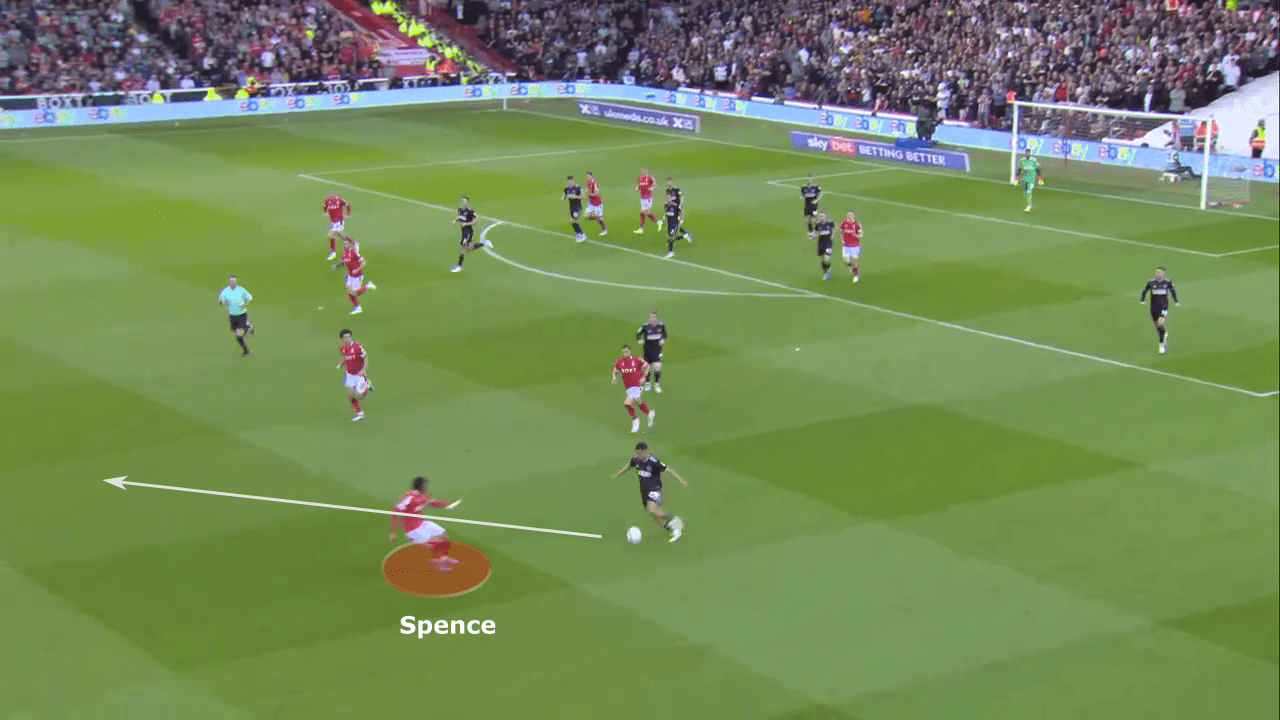
But Spence – tireless, relentless and willing to run himself into the ground for Forest – recovers and beats his man to the end of the through ball to relieve his side of pressure.
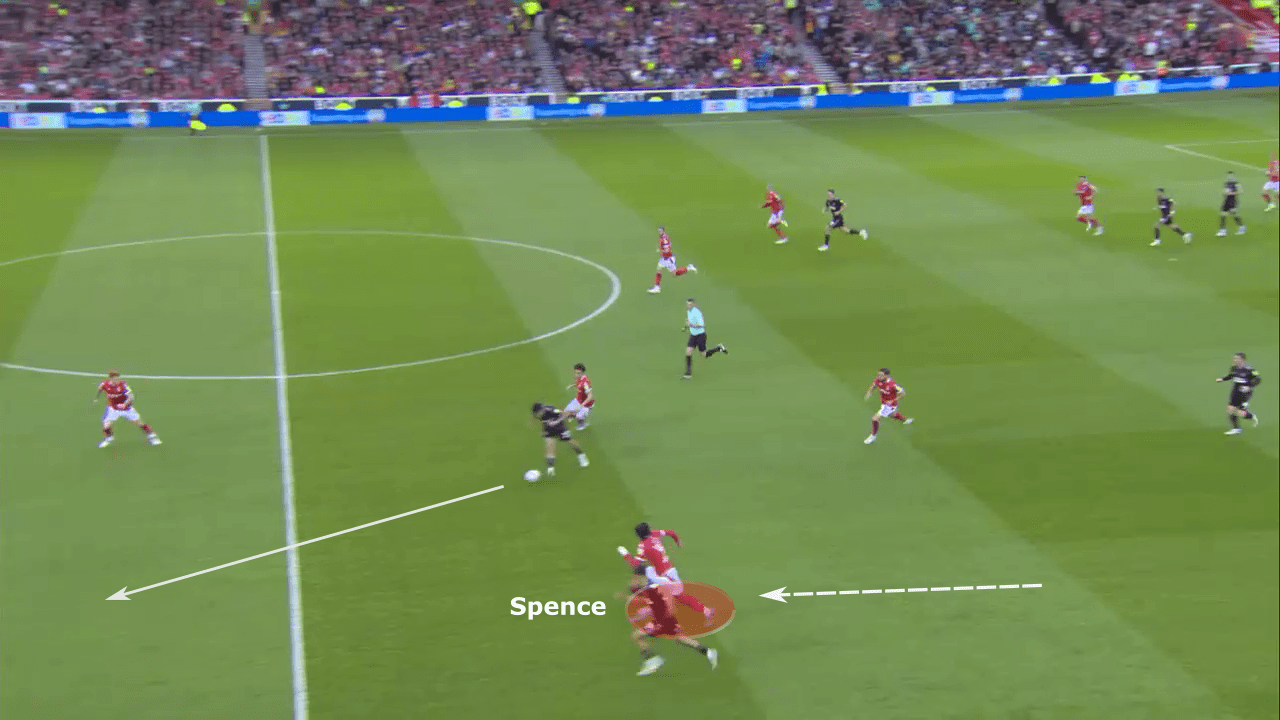
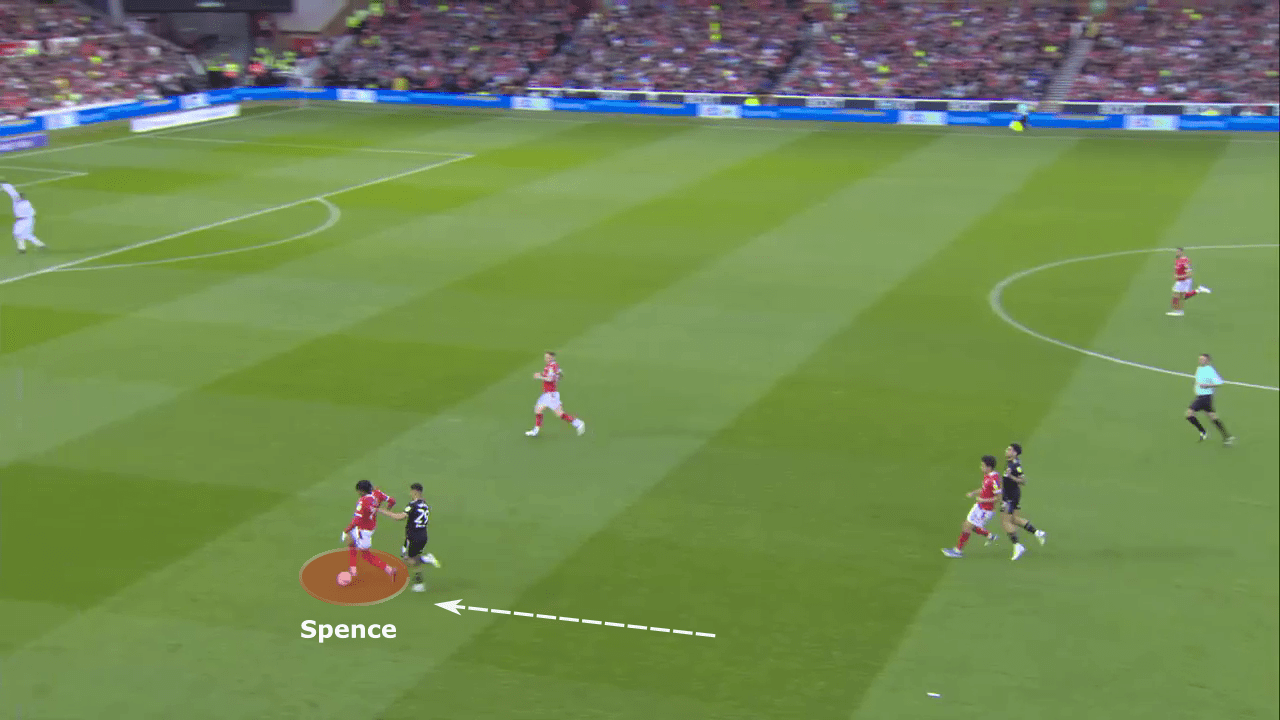
Strengths
To reiterate, Spence’s main strong points are his speed, ball control, dribbling as well as tackling and interceptions.
Spence is great at keeping his touches light and his body over the ball. He can then spring in any direction. A quick two-touch shift sees him blaze past his opponent.
In the FA Cup tie against Arsenal, Spence put in a stellar all-round performance. He is in possession near the byline, under pressure from two players.
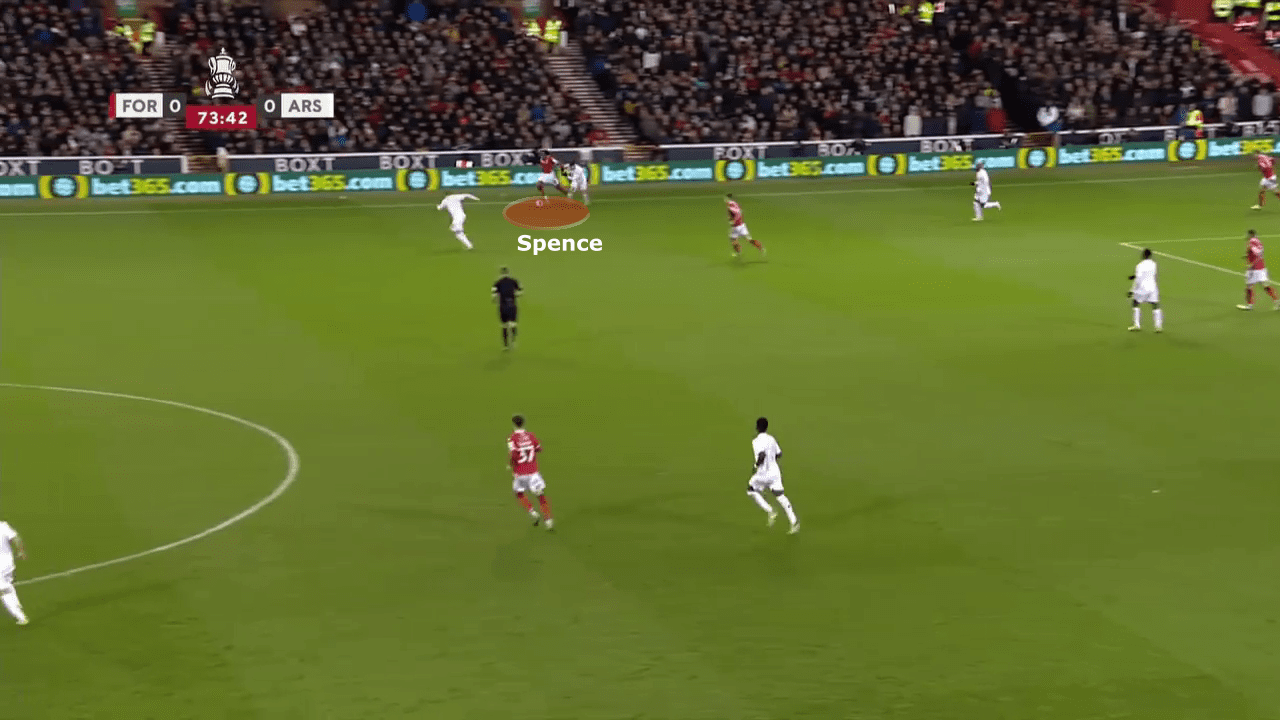
The two-touch shift is brilliantly displayed as he seemingly glides in between and continues his run.
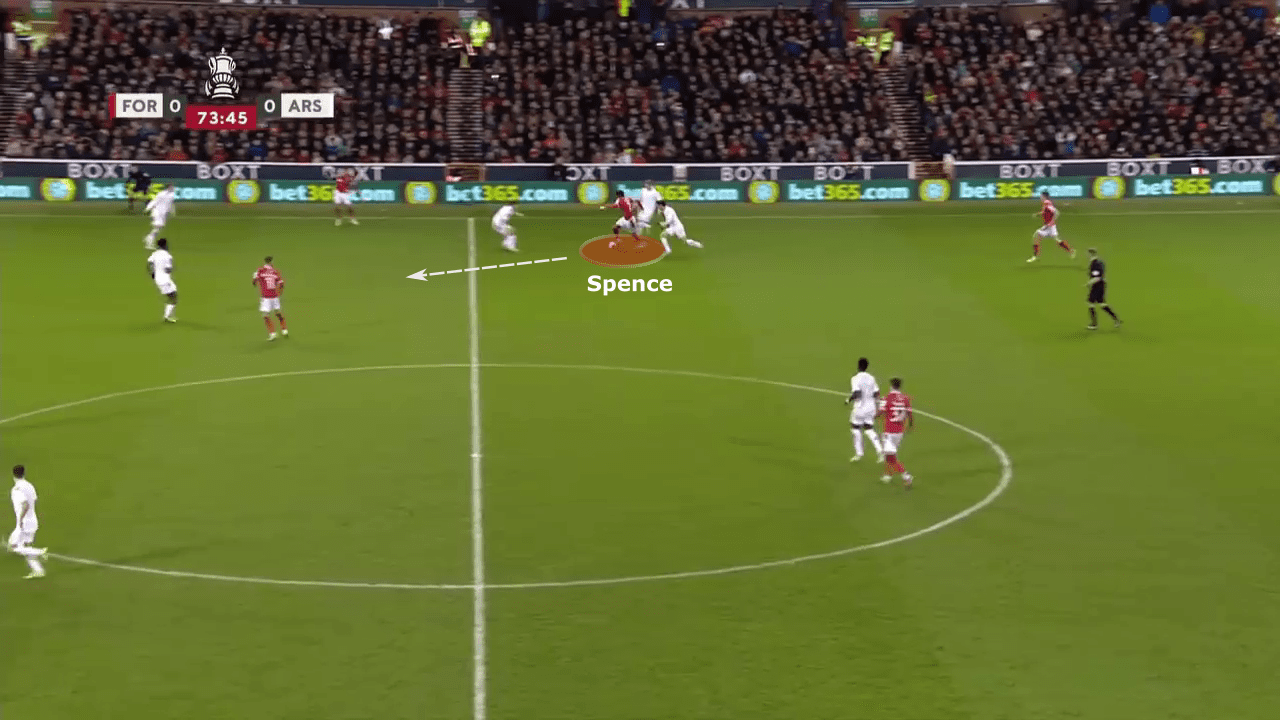
A third Arsenal player comes out in support but Spence has gained too much momentum at this point to be stopped. He gets past all three before being fouled and brought down for a free kick.
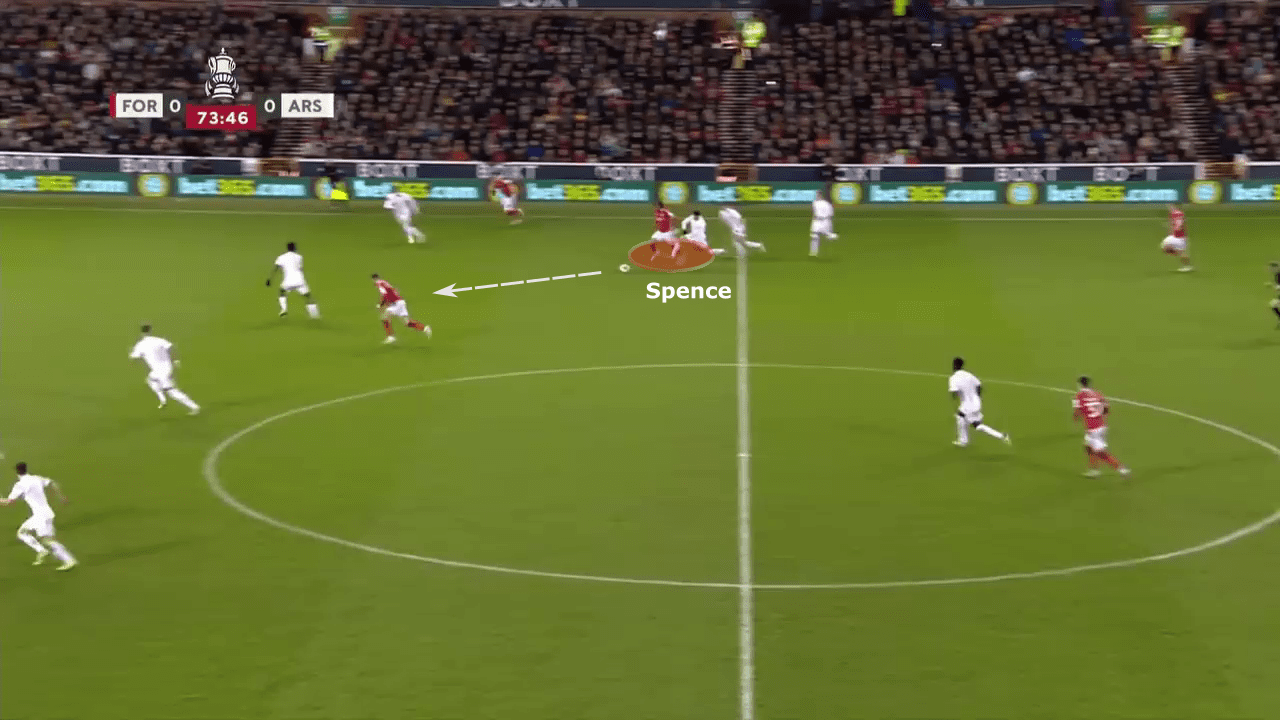
The 21-year-old’s tackling has been compared to that of Aaron Wan-Bissaka. His speed over the first few yards and longish legs are beneficial to his man-marking game. Even if he is a bit late or trailing his man, he puts in a sliding challenge, similar to Wan-Bissaka.
One of his most notable feats this season was shutting out Gabriel Martinelli. The Brazilian gets on the end of a through ball and looks to drive his way into the box; with Spence seemingly losing the race.
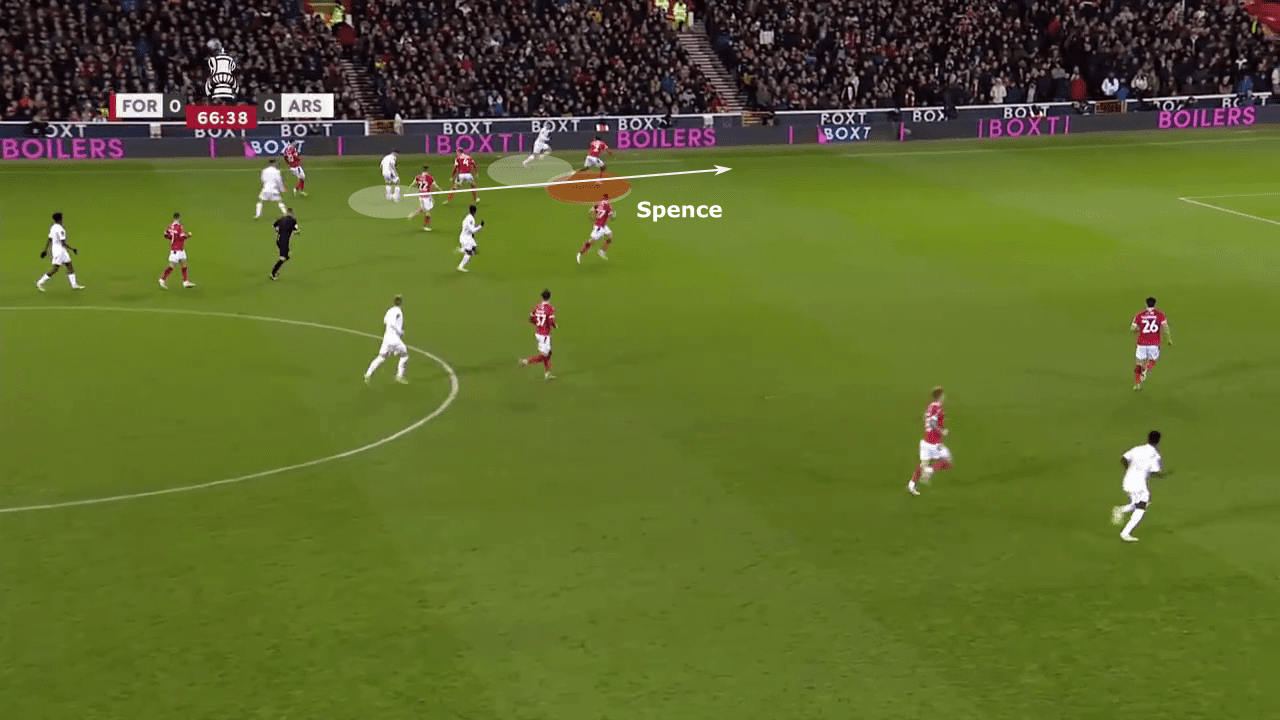
But his recovery pace allows him to sprint back and put in a slide tackle and clear the ball for a throw-in.
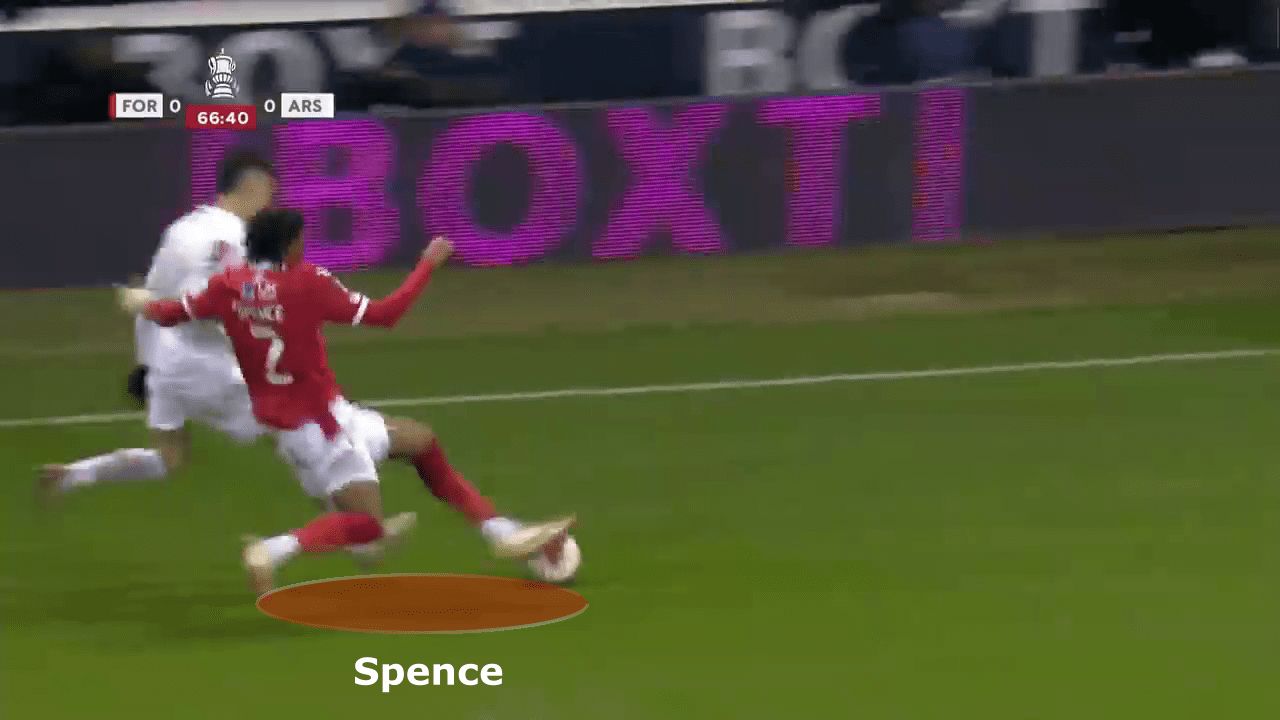
Weaknesses
Like every young player, Spence has some weak points and areas that require improvement. Most notably his awareness without possession, defensive positioning and sometimes poor decision making.
He often falls into the trap of taking too much time on the ball before making a final decision. Half impacted by a lack of scanning before receiving, Spence doesn’t react or play to runs ahead of him quickly enough. With the extra time needed to get his head up, and the skewed vision he has as a result, he can often miss the need to play the simple pass inside or backwards.
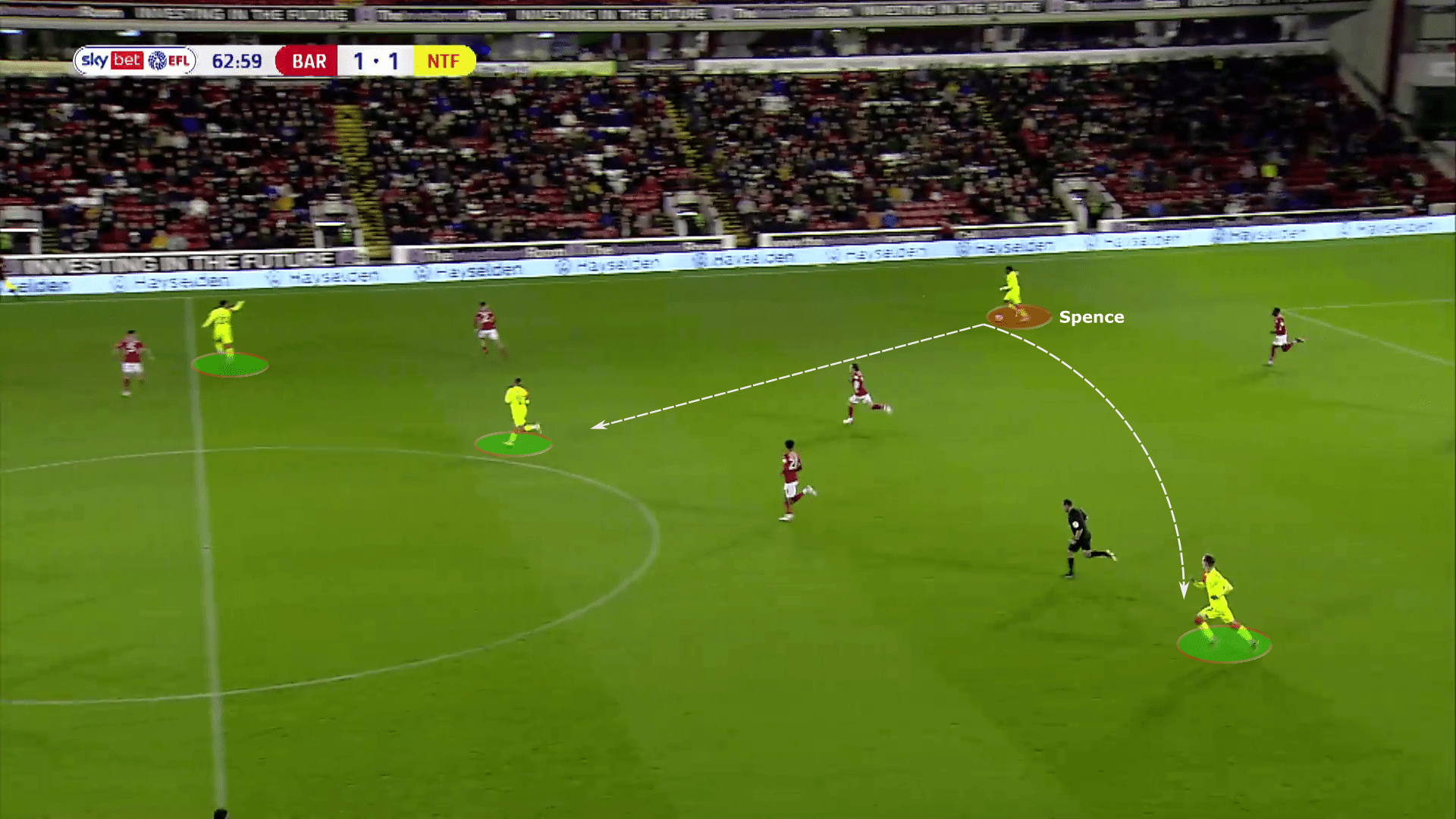
He has options to play it through the middle or switch the play to the other side. He waits and drifts upwards, giving the defenders time to close down the passing lanes and ends up giving it away in a dangerous position.
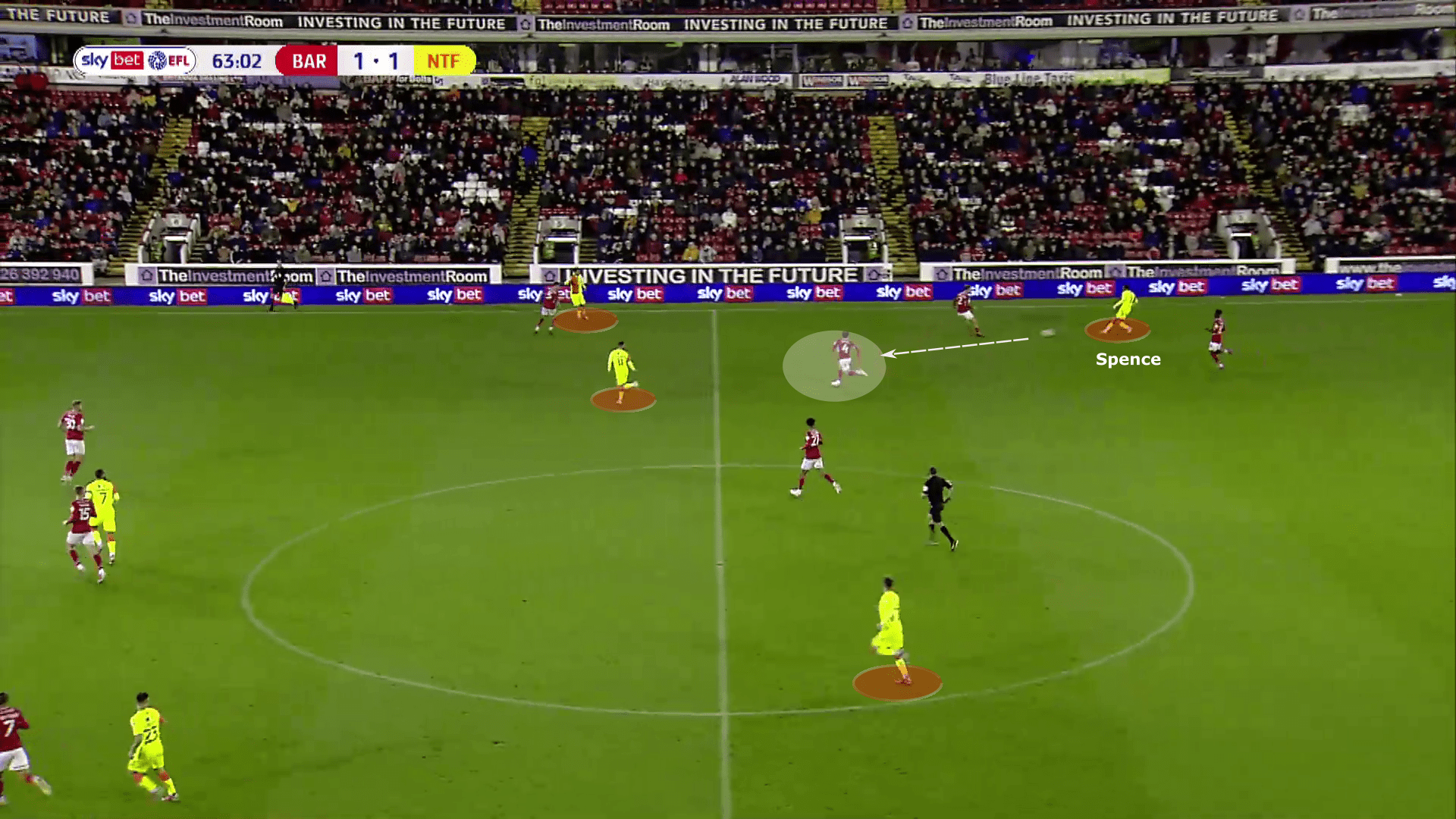
Spence is not one to constantly lifts his head mid-dribble to see what’s on, so it’s usually hard to get a pass or cross out of him early or when there’s a slight opening during his ball runs. In the FA Cup tie against Liverpool, he receives the ball with space to run, but he overdoes it and ends up running straight into Tsimikas. Had he raised his head up, there were available options around to play to.
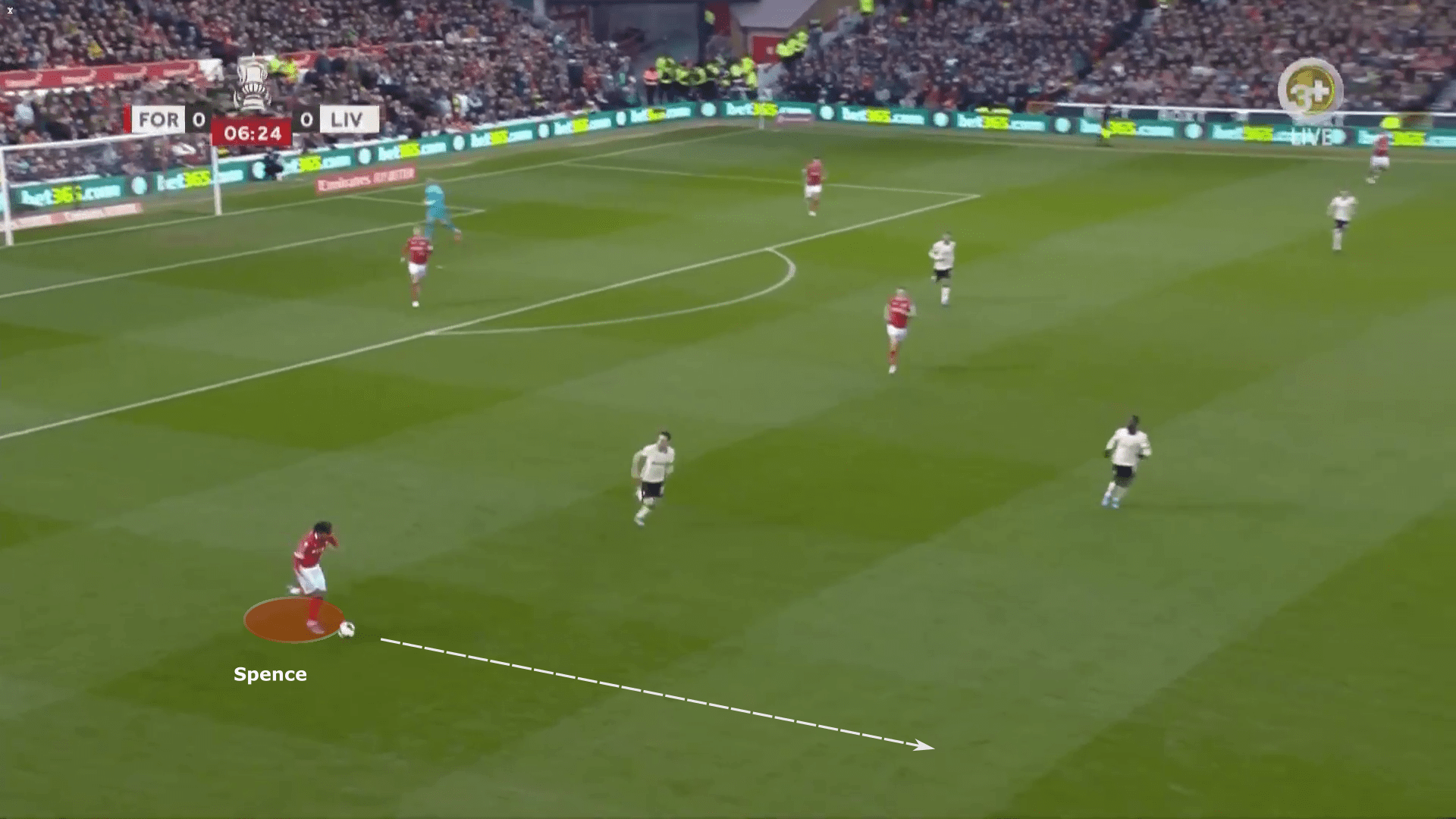
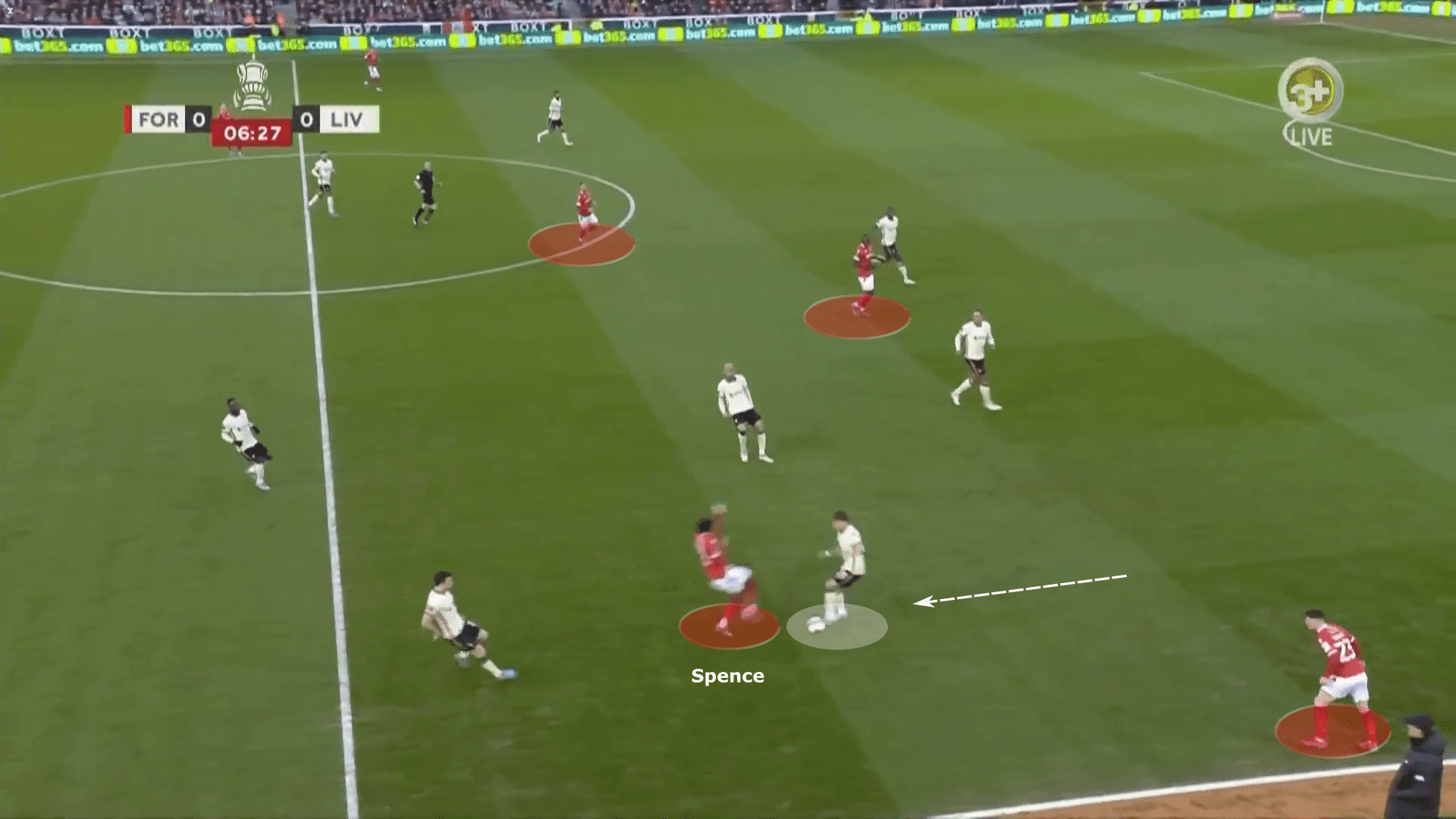
Defensively, an alarming aspect of his game is his lapses in concentration. His tendency to ball-watch is also apparent when turnovers occur on the opposite side, as he’s then often a few seconds slow of reacting appropriately by getting back goal-side of the attackers who target the exposed space down his channel.
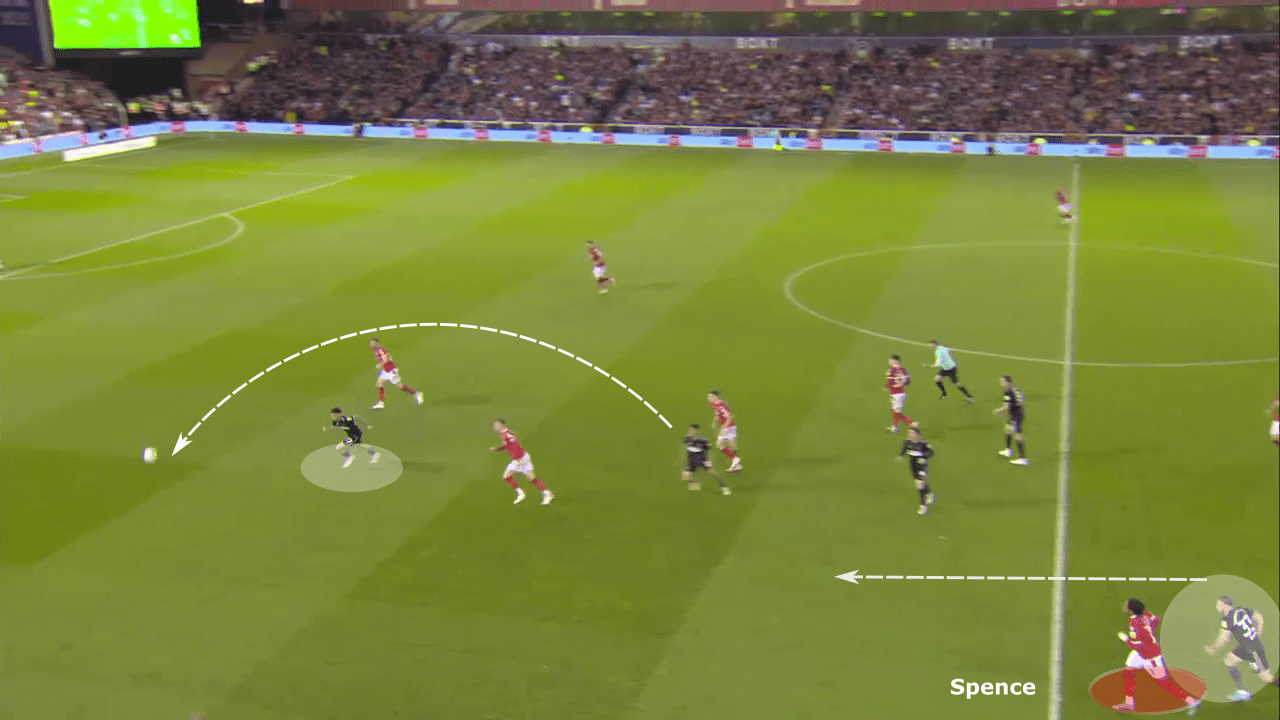
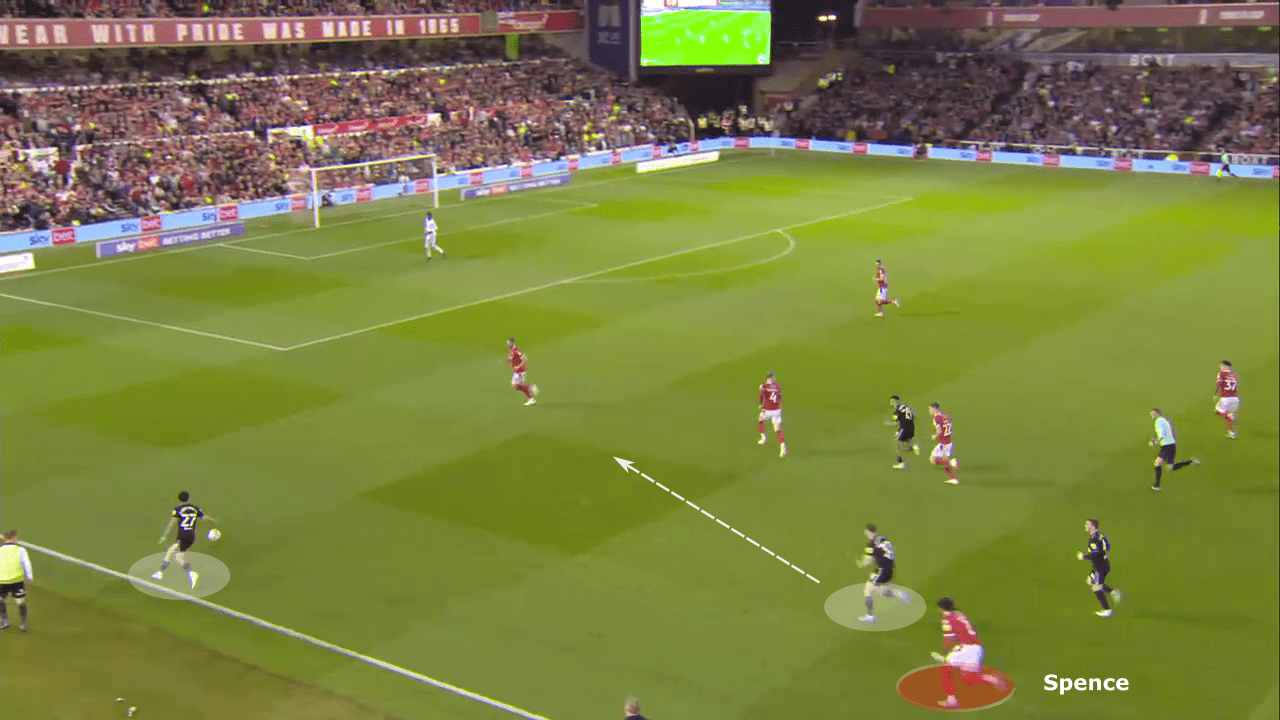
Thankfully for him, his blistering recovery pace has seen him get off the hook more often than not.
Conclusion
Ultimately, Spence has the capabilities of a modern, possession-based wingback. This potential will only flourish under the proper coaching and system which will also benefit his defensive positioning, awareness and forward execution.
If he ends up joining Tottenham, he will arguably be under the guidance of one of the world’s best in Antonio Conte; a master of the three at the back who will instil the discipline and attributes required to become a top wingback in Spence. Spurs’ system fits Spence like a glove, showcased by the freedom Matt Doherty and Emerson Royale enjoyed on that side of the pitch last season.
With a Premier League move beckoning, can Spence make his mark and cement his name among England’s abundant talent of right-backs such as Trent Alexander-Arnold and Reece James?
Spence might well return to Forest if a deal can be struck; the place has felt like home to him.
“[This club] means everything to me,” Spence told NottinghamshireLive. “I’ve come here and the fans and gaffer have both taken me in.”
“We lose together and win together. We’re going up together. This means everything to me. I would love to stay, but it’s not in my hands. We’ll see what the future holds.”




Comments